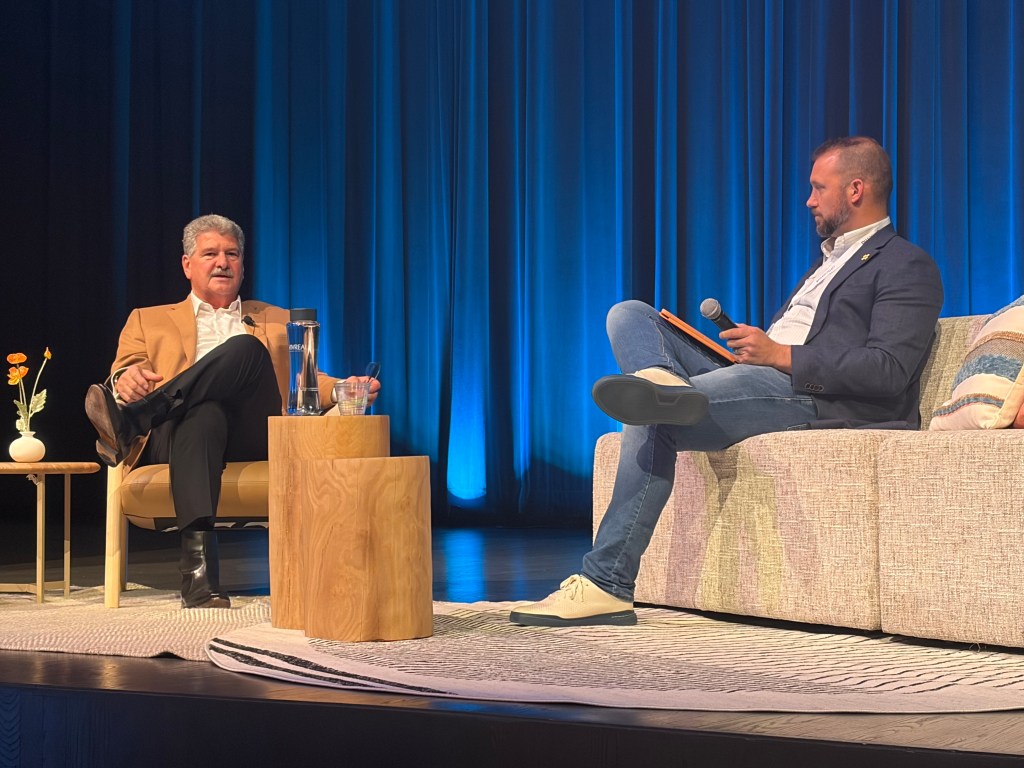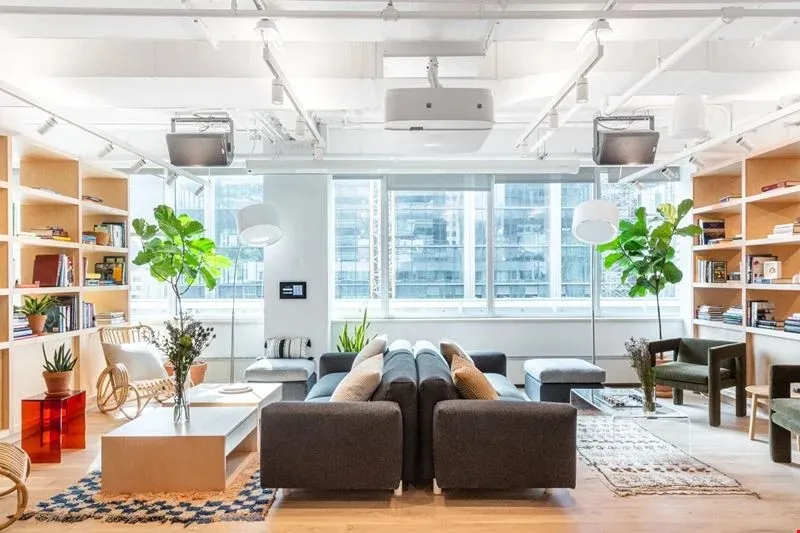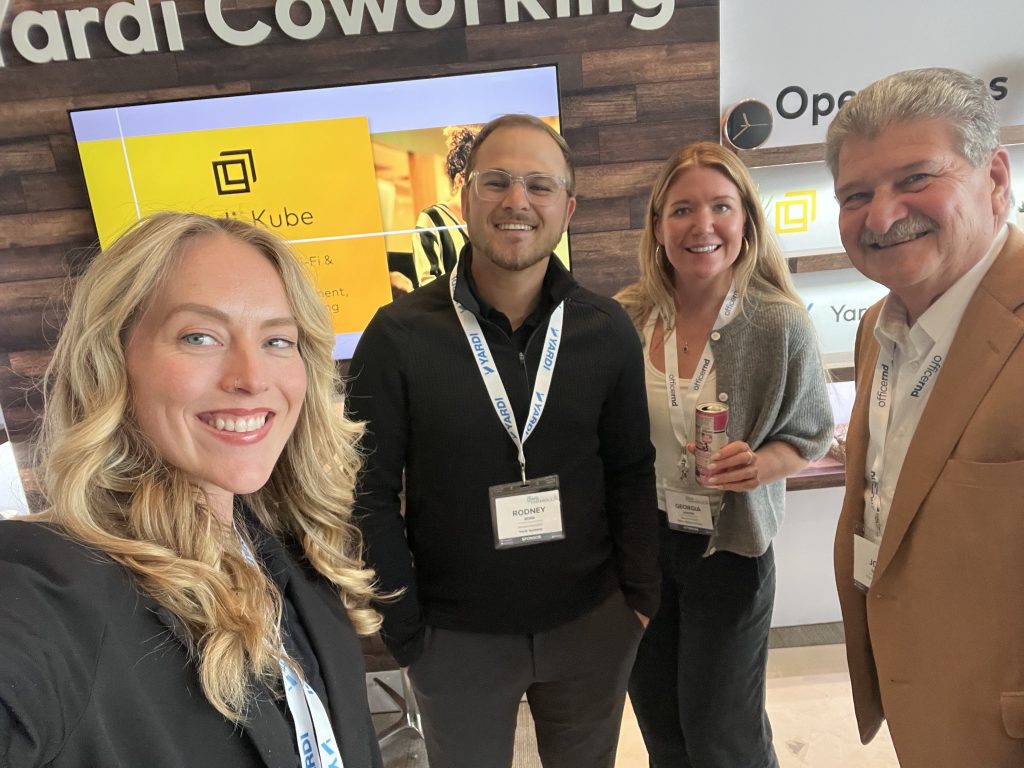Building the Future of Flexible Work: A Fireside Chat with WeWork CEO John Santora
WeWork CEO John Santora on discipline, demand—and why Yardi is core to the comeback
At this year’s Global Workspace Association Conference in Chicago, WeWork CEO John Santora joined Richie Parsons, Venture X franchise owner, for an honest fireside chat about rebuilding one of the most recognizable brands in coworking. What followed wasn’t a polished keynote or a slide deck, it was a candid look at how WeWork found its footing again through discipline, focus and partnership. Santora shared stories from his decades in real estate, lessons from WeWork’s turnaround, and how collaboration with Yardi is powering the company’s next chapter.

From firehouse dreams to rebuilding a global brand
Santora didn’t arrive via the typical startup route. “I was going to be a New York City fireman,” he said, smiling. A summer job at Cushman & Wakefield turned into a 47-year career that culminated in the Global COO role and the helm of massive integrations and public-company transitions. That operating muscle and decades of landlord and broker relationships shaped his first moves at WeWork.
When Anant Yardi acquired a majority stake during WeWork’s restructuring, Santora called him immediately. “I wanted to see what we could build together.” Twenty days later, he was CEO, tasked with stabilizing a company that had to prove it could be disciplined and durable.
Discipline first, silos last
Day one, the focus was credibility and accountability. Santora restructured around regional P&Ls so operations, sales, and leasing finally pulled in the same direction. “We needed clear ownership of results,” he said. That operating model and a hard line on profitable deals changed the trajectory. Over the last three quarters, WeWork has been EBITDA-positive for the first time in its history and even slightly cash-flow positive last quarter. It’s a different posture: measured, data-driven, and allergic to chasing growth for growth’s sake.
Flex is now the third path
Ask Santora where the market is going and he doesn’t hesitate. For corporate occupiers, portfolios are no longer a binary of “own or lease.” They’re becoming own, lease or flex – and he expects 20–30% of large portfolios to be flexible in the next few years. The business case is straightforward: expand or contract faster, reach talent across submarkets, and move closer to employees without long-term bets.
The real constraint isn’t demand; it’s supply. WeWork will only add where markets are full and the need is proven. For big enterprise requirements – 50,000 to 100,000 square feet and up – the company often sources space specifically for the client, frequently via subleases and matches its commitment to the client’s term. That structure reduces risk for everyone and creates room to extend if the fit is right.

He also sees flex moving beyond office space. Hotels with underused lobbies and event rooms are ripe for activation. “That’s a huge opportunity,” he said, especially for operators who can broker access and deliver a turnkey experience.
The Yardi backbone
Santora was direct about the role Yardi played: “I don’t think WeWork exists if it wasn’t for Yardi.” The investment kept the company alive through restructuring; WeWork emerged with no debt and a clearer technology spine.
That spine is Yardi Kube, which WeWork is rolling out globally. “For the first time, we can see everything – where revenue is coming from and who it’s coming from – all in one platform,” Santora said. The visibility is the point: one system for members, inventory, and revenue so leaders can run the business by fact. He also emphasized how the product relationship works: Yardi’s teams meet WeWork where the work happens, road-mapping, improving and pressure-testing together. “They’re not just a vendor, but a partner in our success.”
Community, product and the shape of space
The WeWork experience is getting a tune-up. Community Managers now sit under regional leadership for tighter alignment, and the company recently brought in the Ritz-Carlton Leadership Center to level up hospitality training globally. On future space design, expect a subtle shift toward a more corporate aesthetic, still recognizably WeWork, but closer to enterprise standards.
On real estate strategy, WeWork continues to favor Class B/B+ where the economics work best, stepping into Class A only when location and timing make sense. In some buildings, WeWork is exploring a hybrid approach: operate amenities under a management agreement and lease coworking floors traditionally, a win for owners and for members who want more out of the building than a nice lobby.

Partners and brokers matter again
WeWork’s partner network now tops 1,000 locations, with roughly another 1,000 international sites on the way. The aim is simple: serve enterprise clients everywhere, including markets that don’t fit WeWork’s operating profile. Where partners and WeWork sit near each other, they practice smart co-opetition – referring overflow, honoring All Access, sharing meeting capacity. Customers feel the benefit first.
Broker engagement, which cooled during the industry’s rough patch and the pandemic, is warming. Major firms now field flex-specialist teams, and Santora expects them to bring clients the full market view. “They have to show everything,” he said. That transparency ultimately builds confidence in flex as a mainstream option.
The next five years
Picture a stabilized WeWork: steady financial performance, a global footprint tuned market by market, deeper cross-industry partnerships and a product that spans office, hospitality and amenities. Most of all, picture an industry that’s credibly mainstream. “You should feel good about the business you’re in,” Santora told operators. “It’s dynamic, rewarding, and resilient. Flexible work isn’t a trend. It’s the future.”
